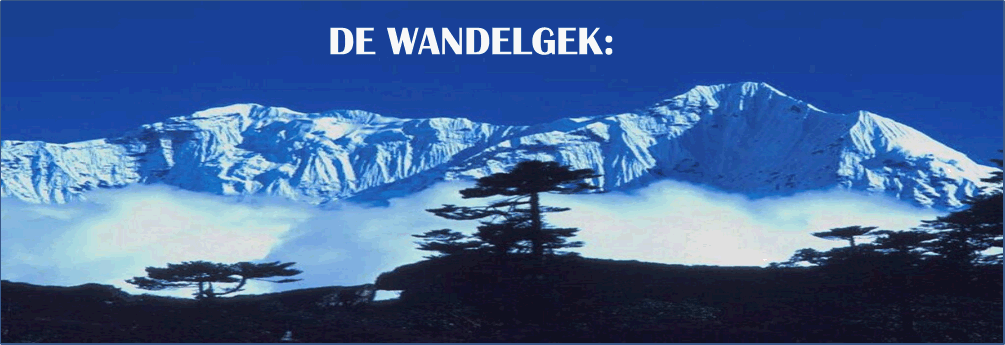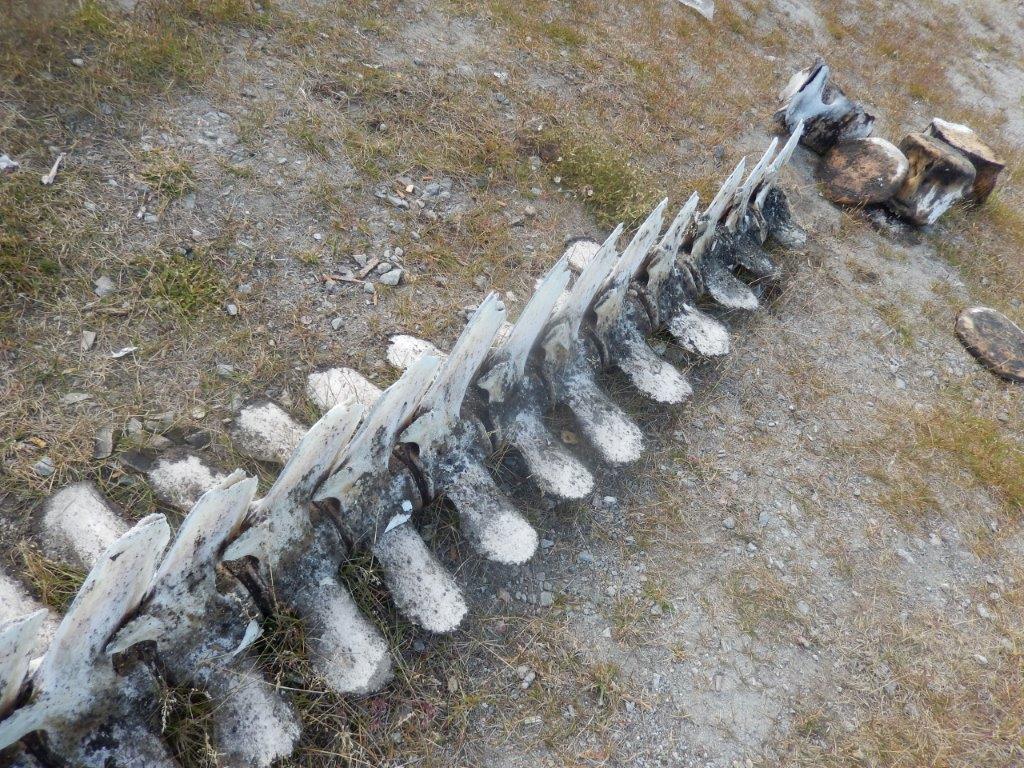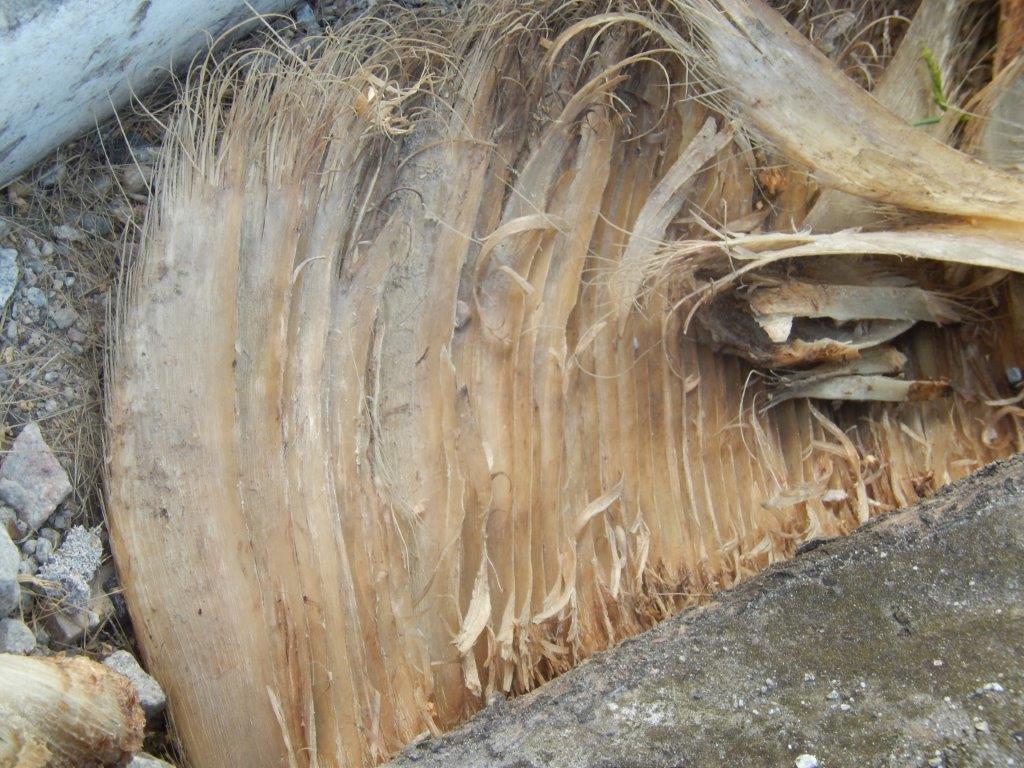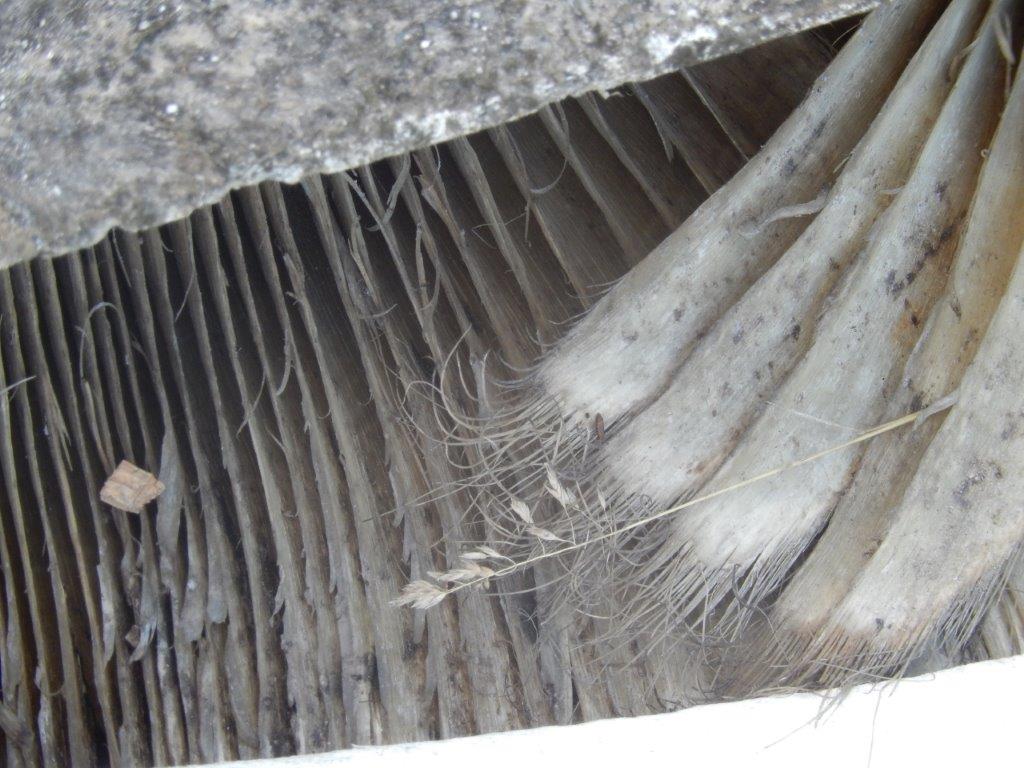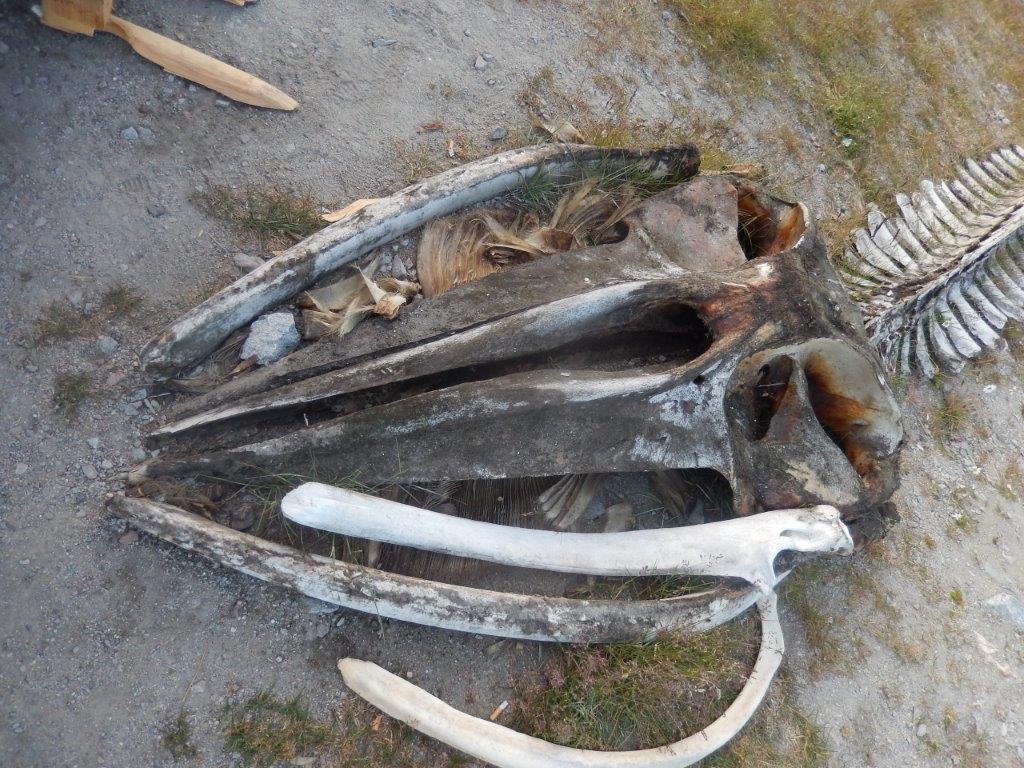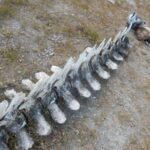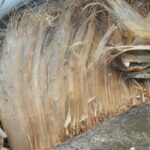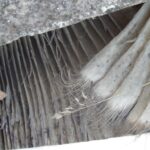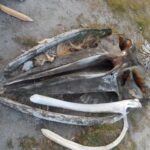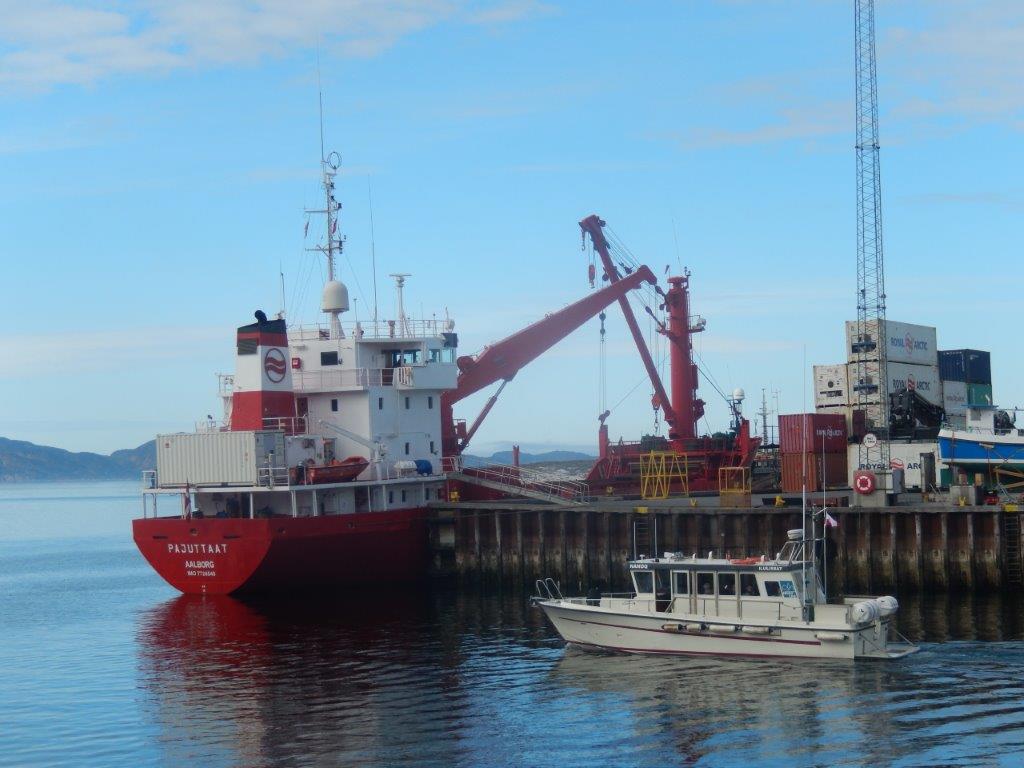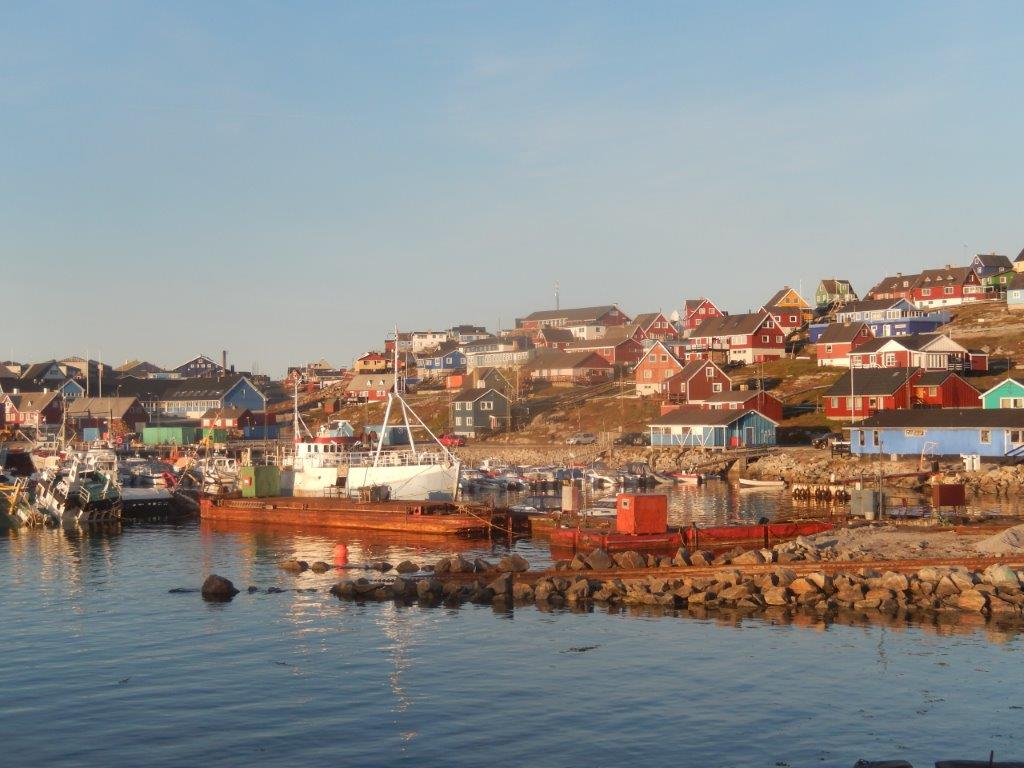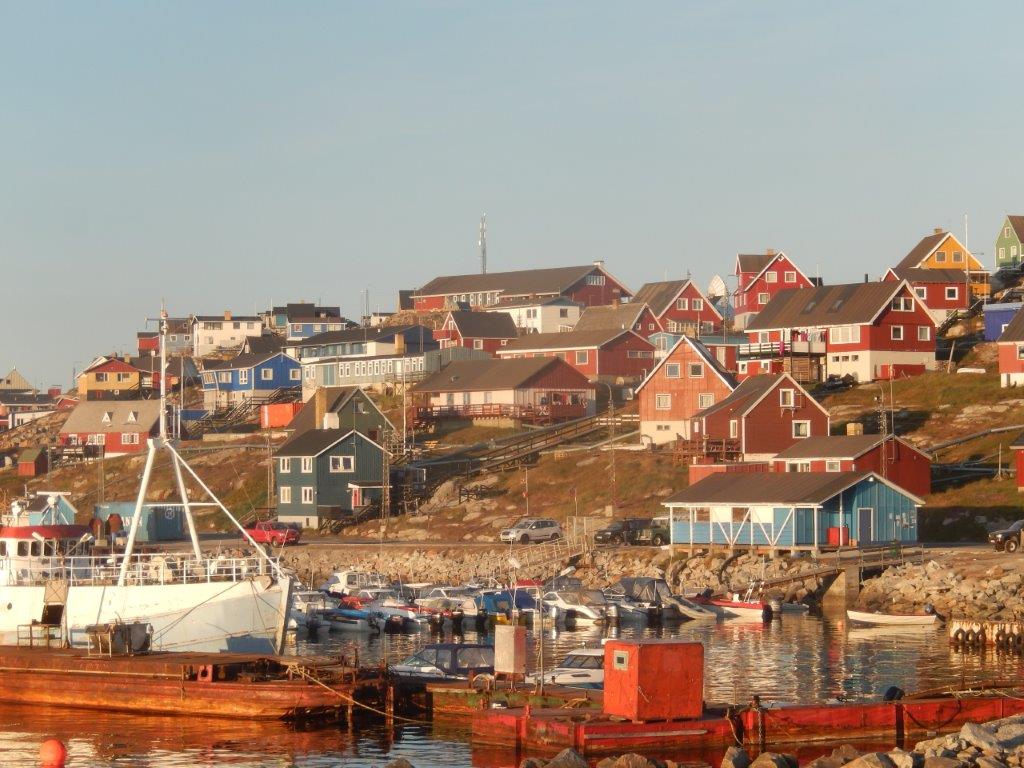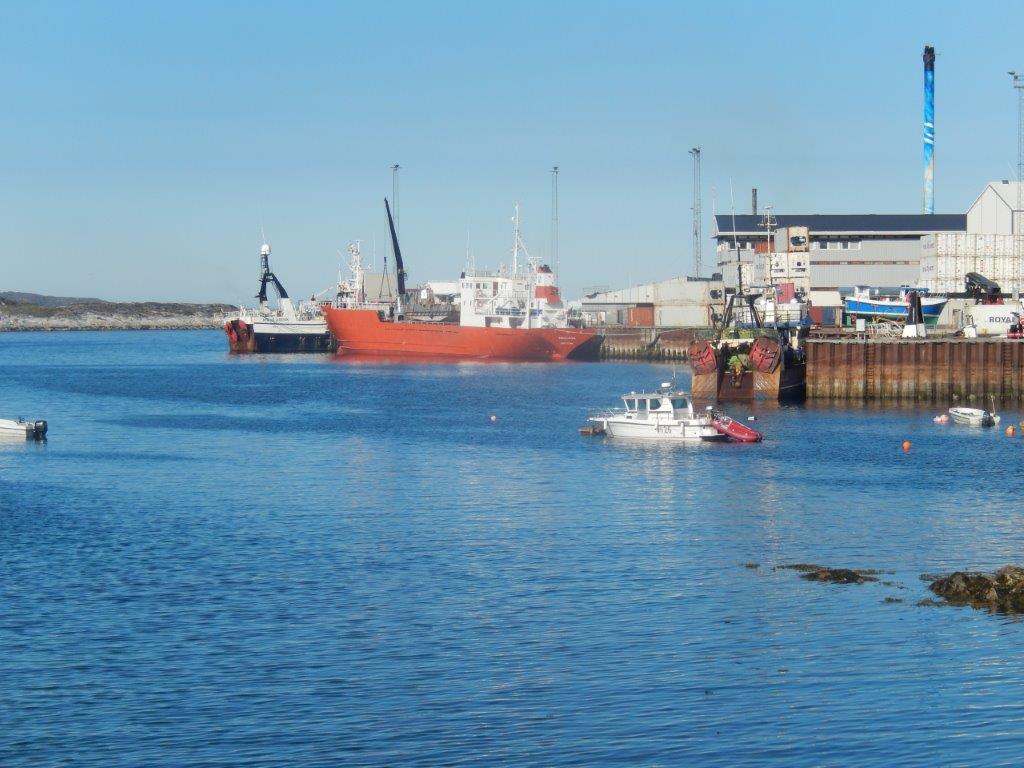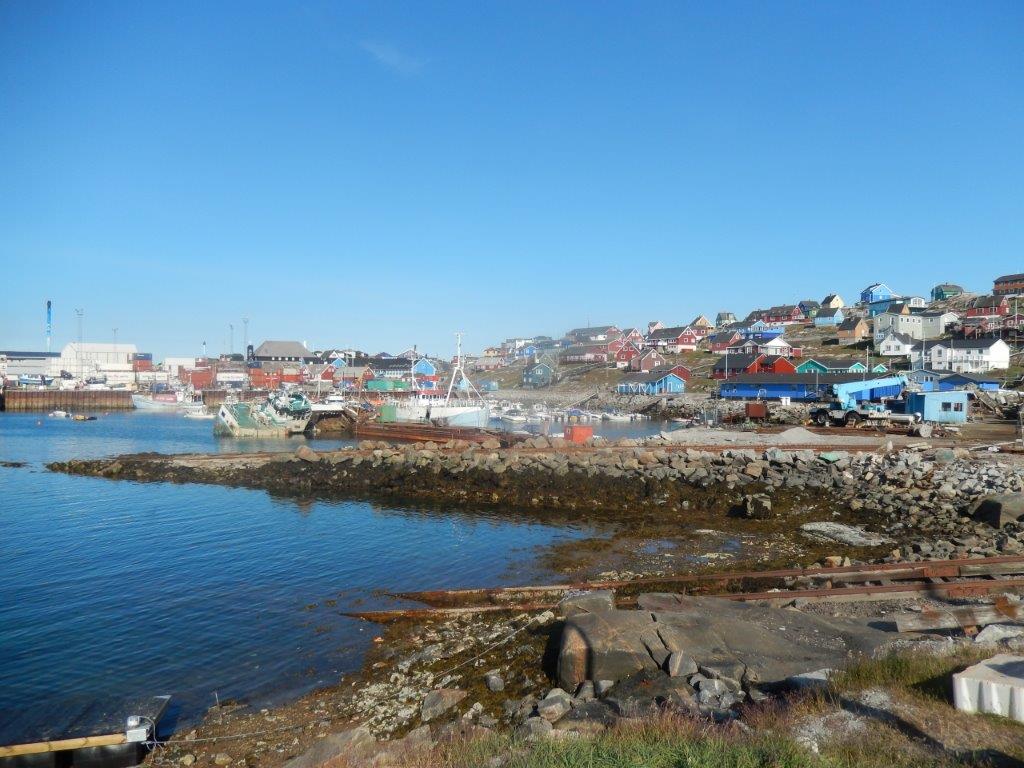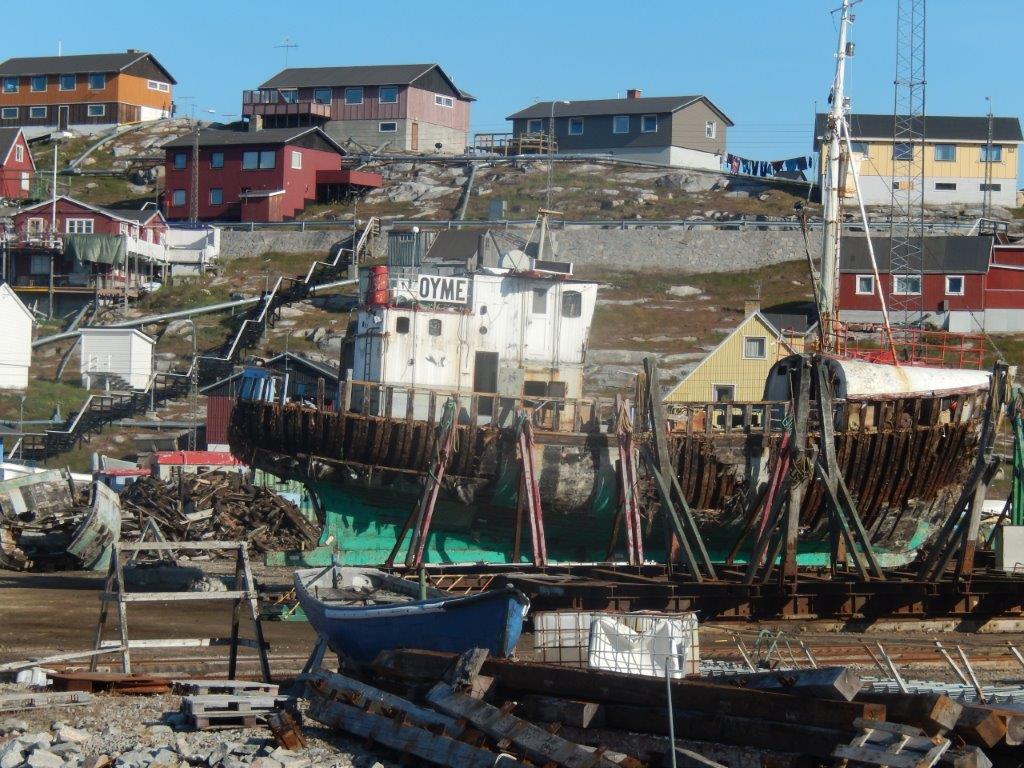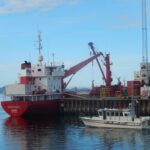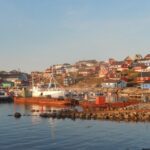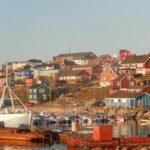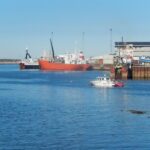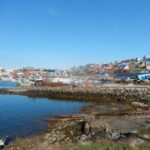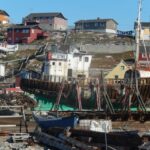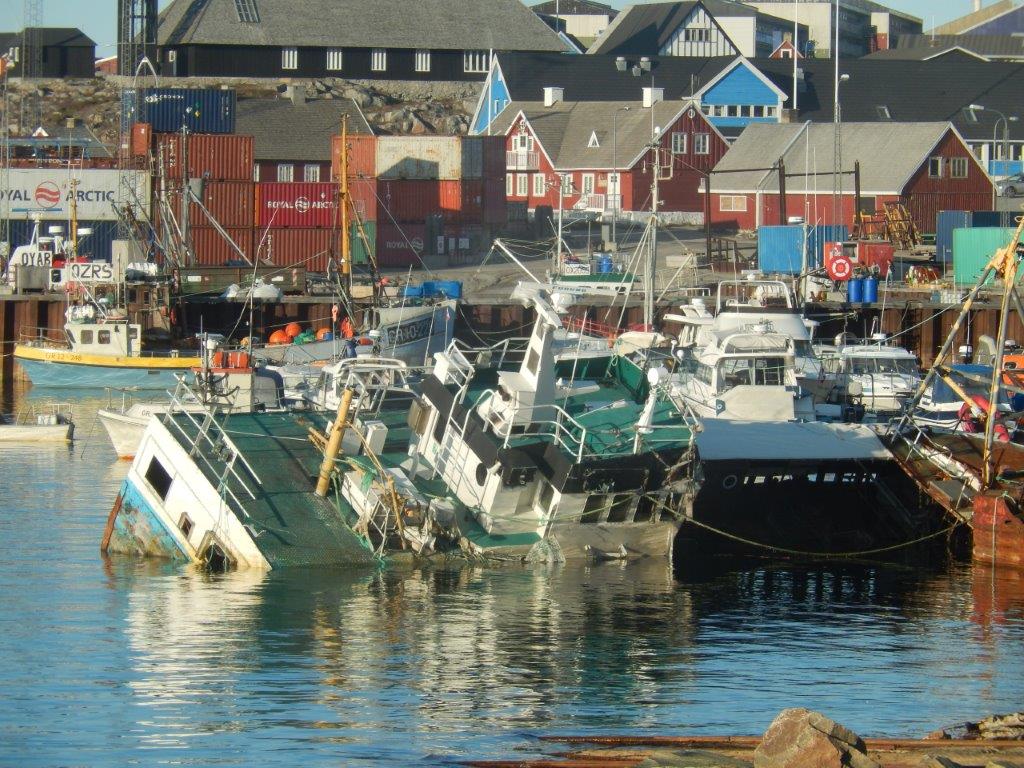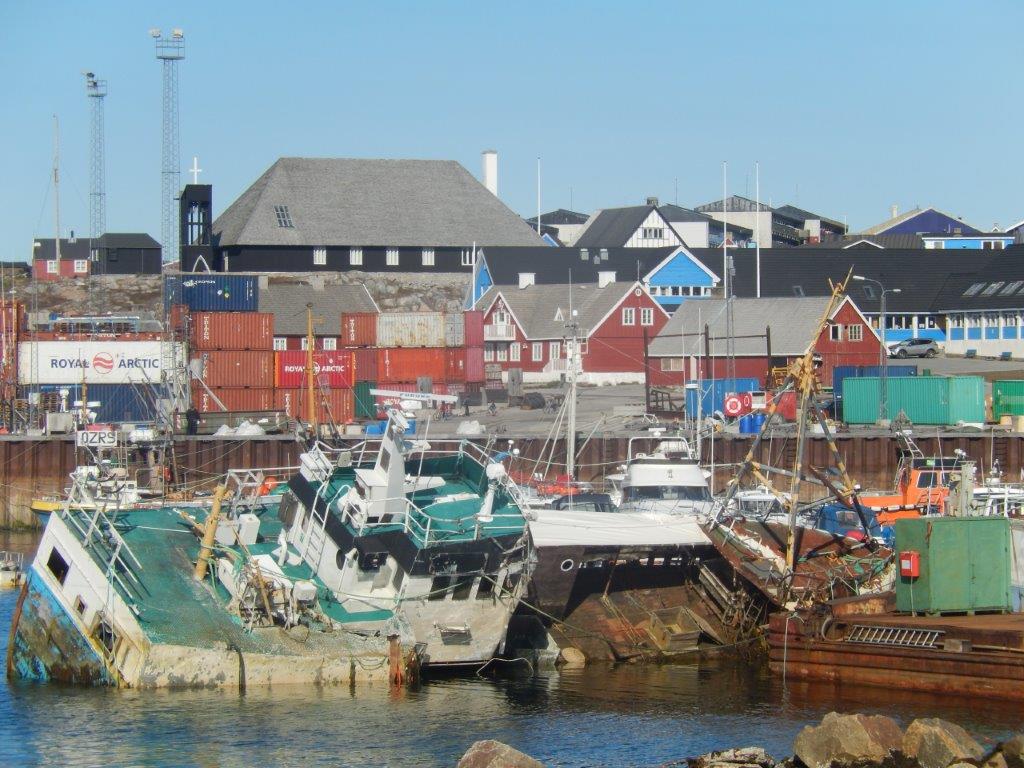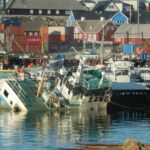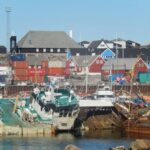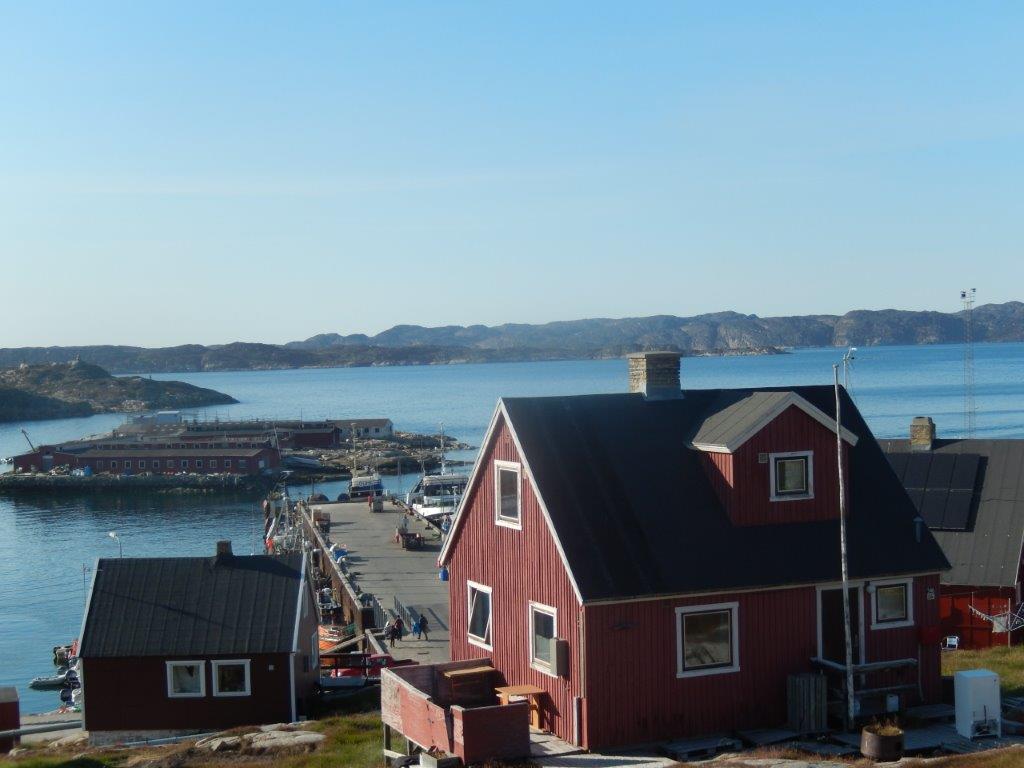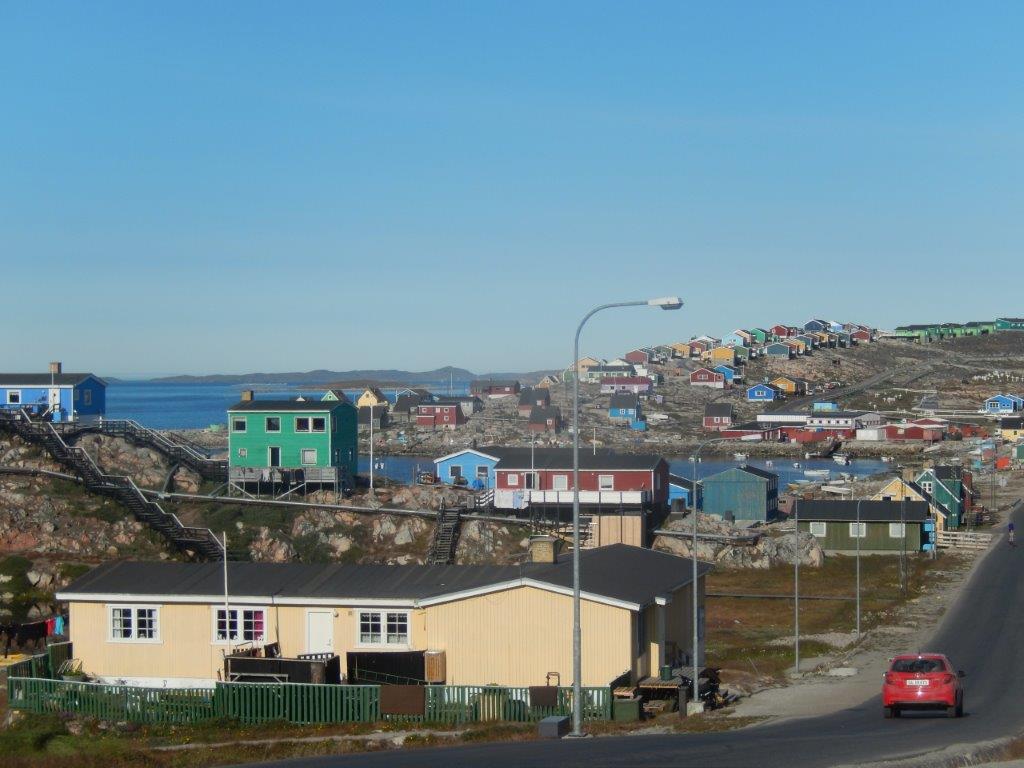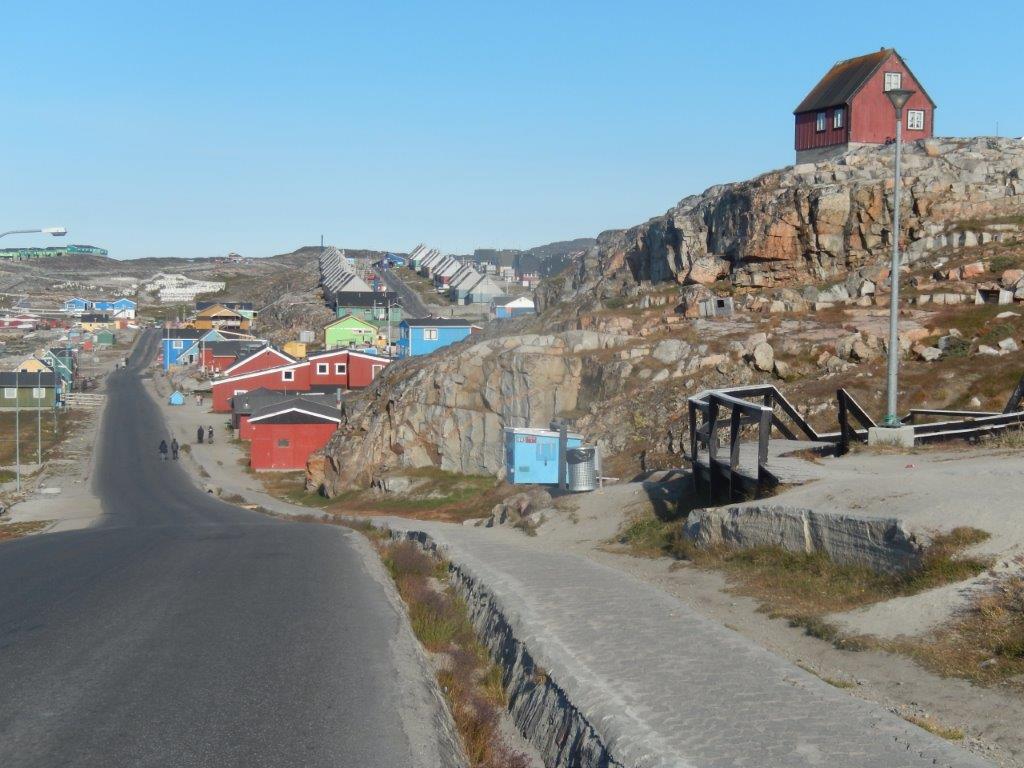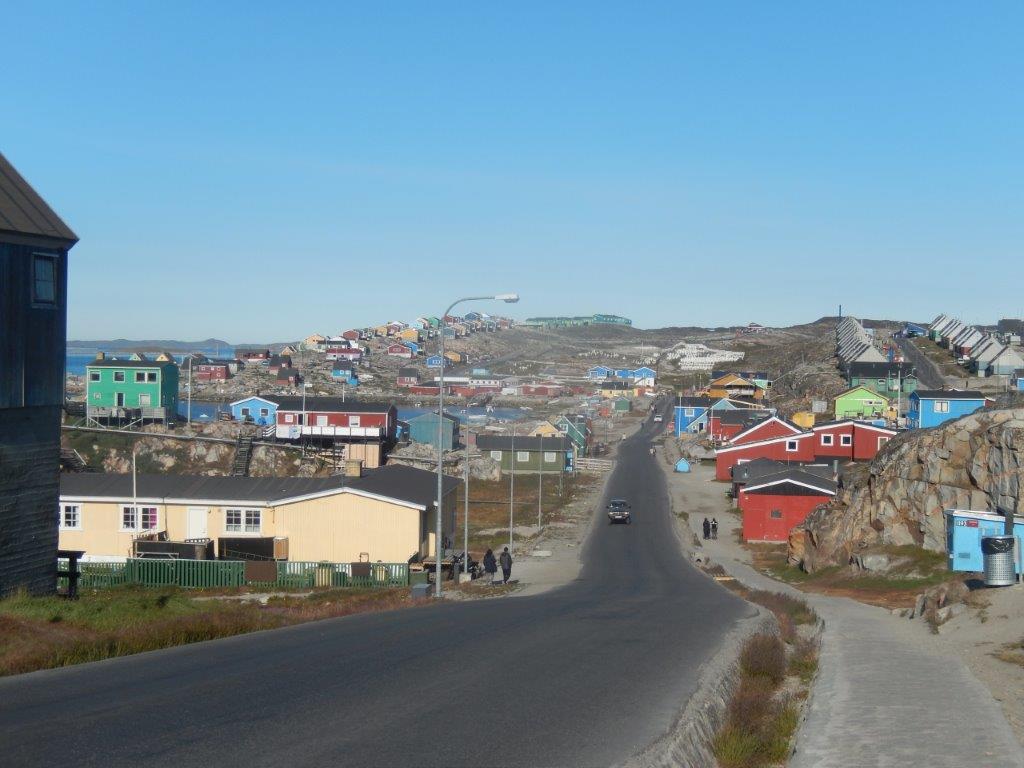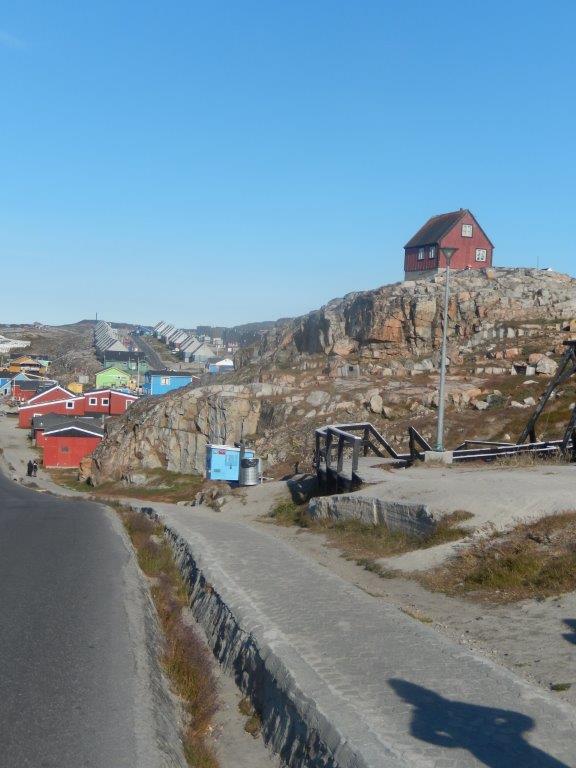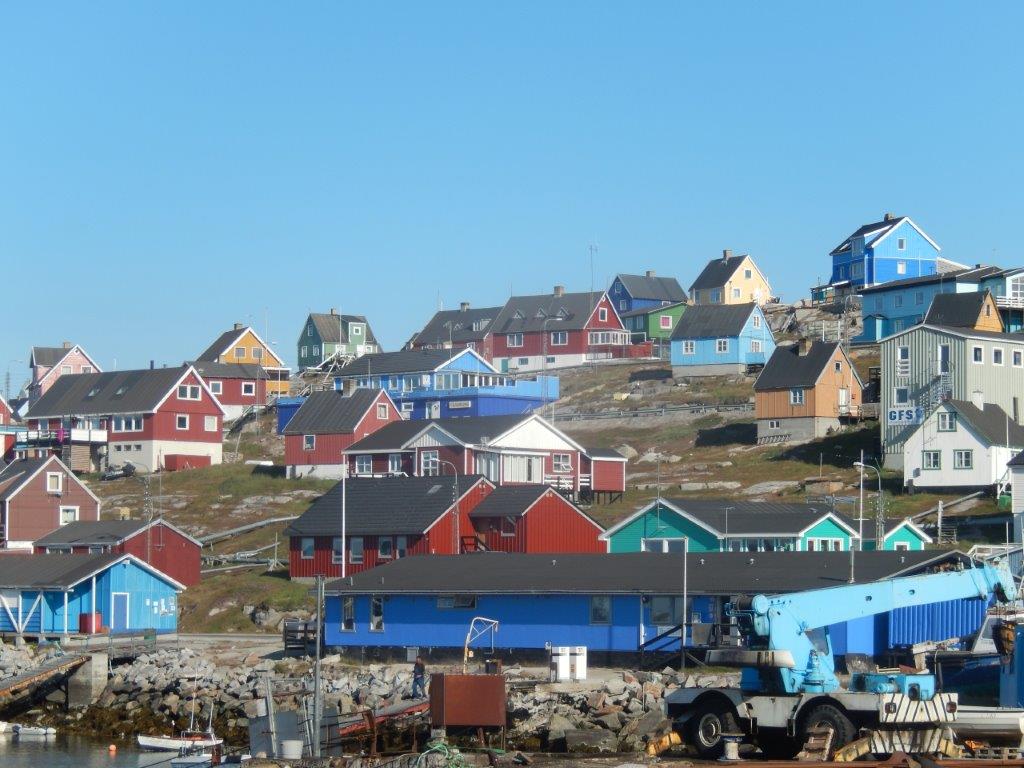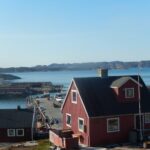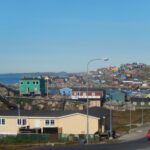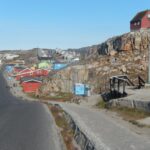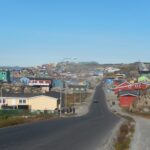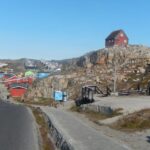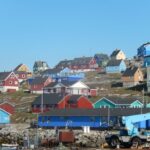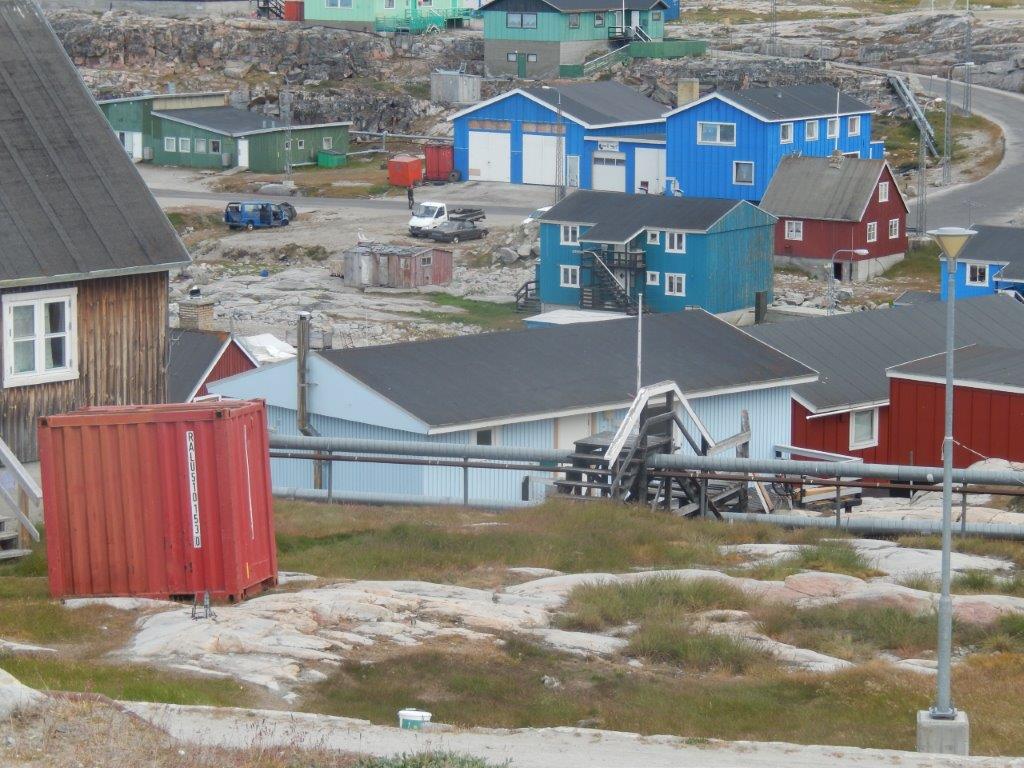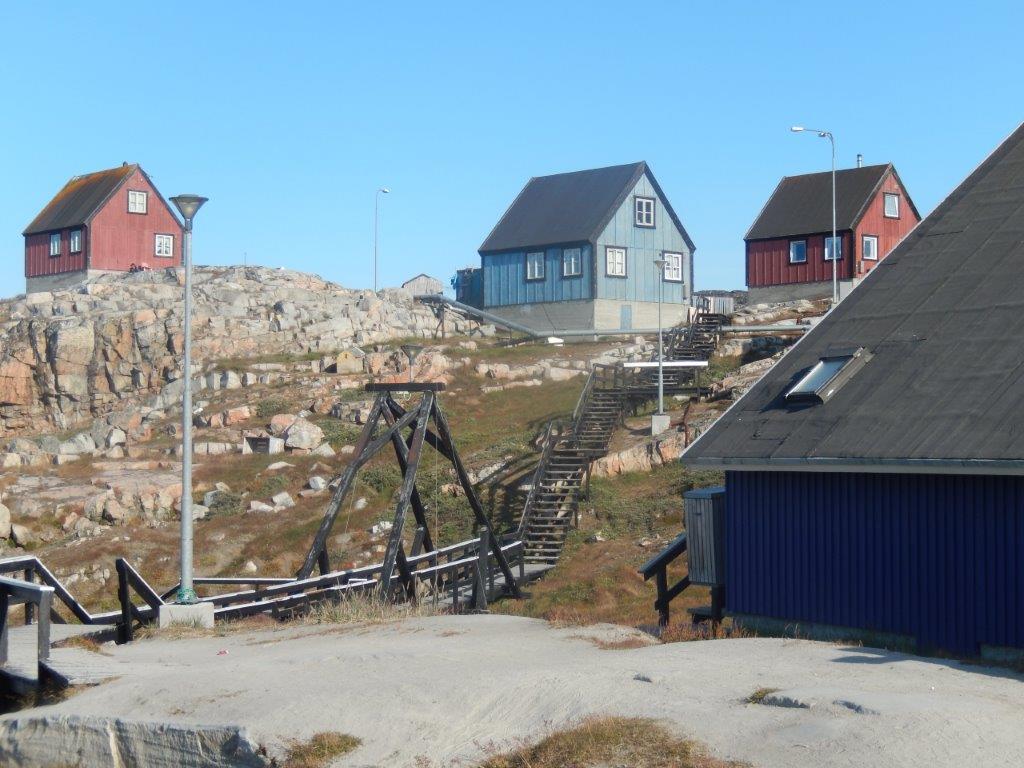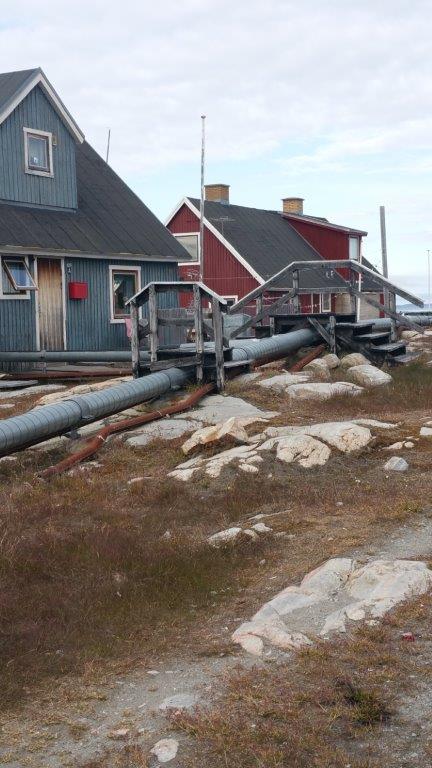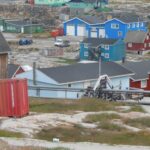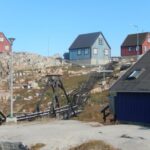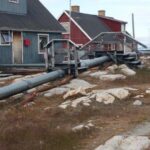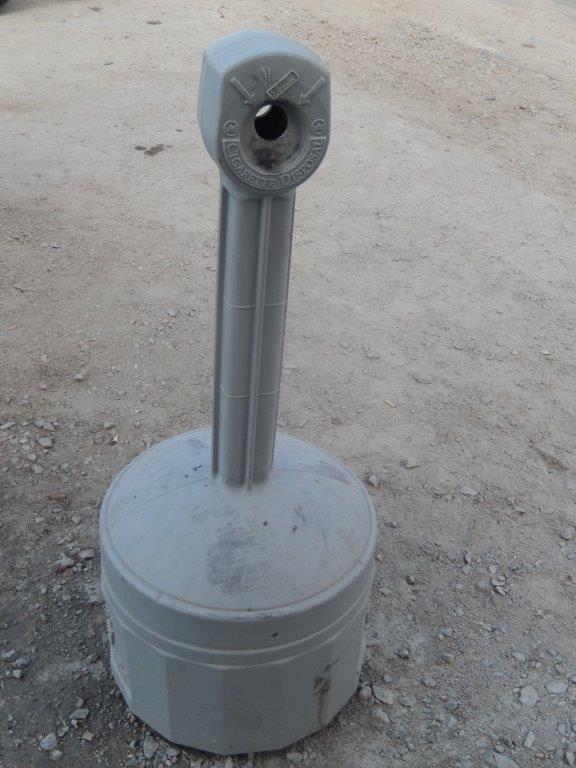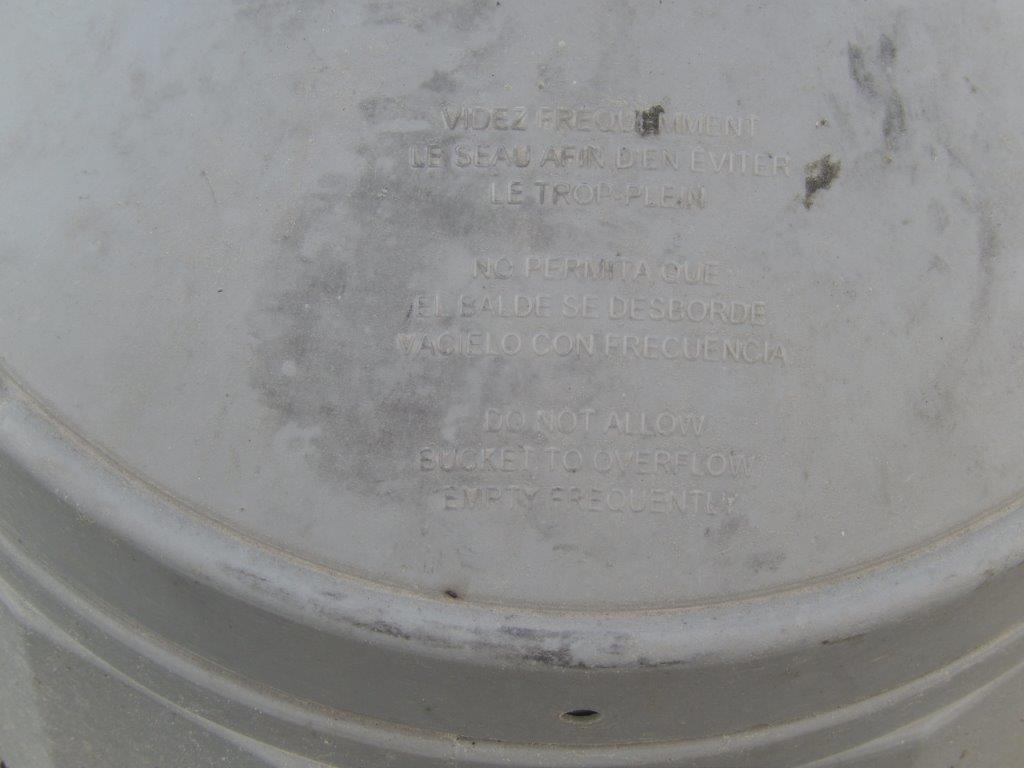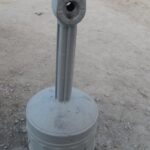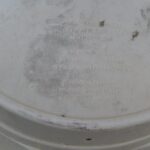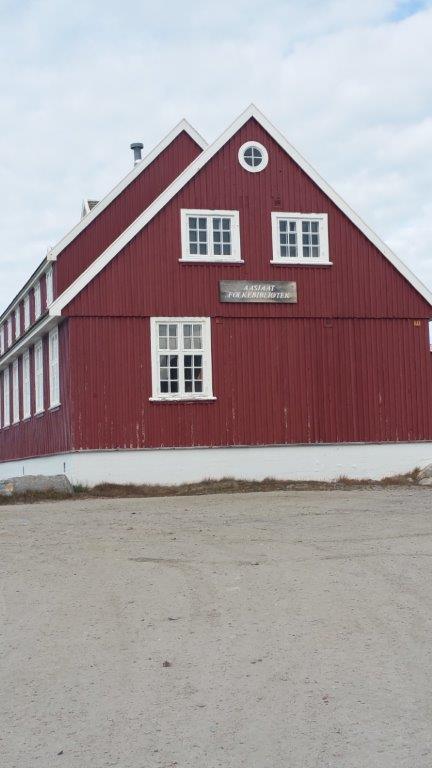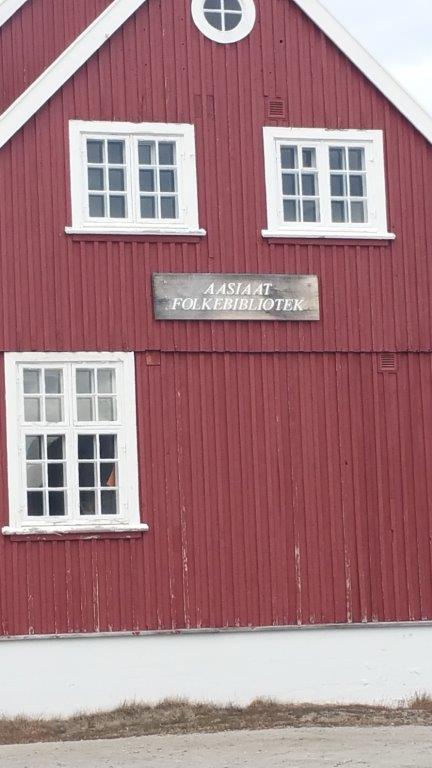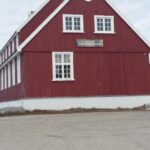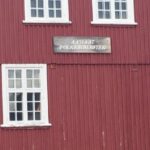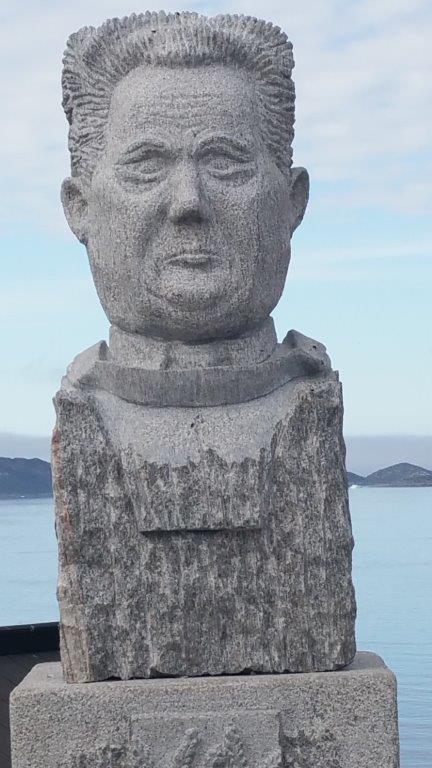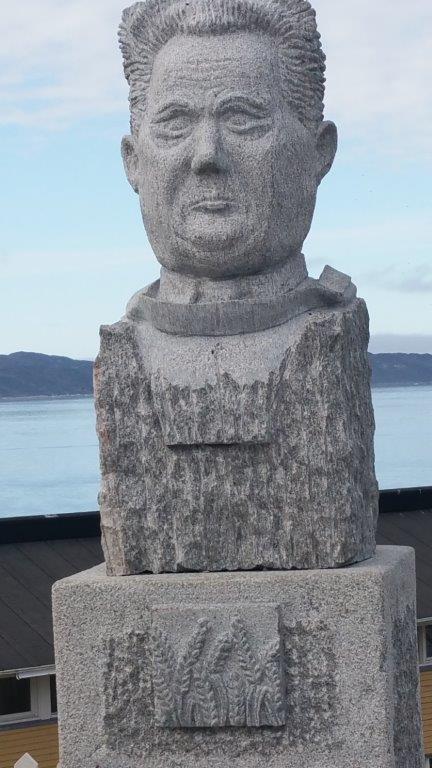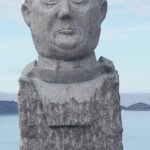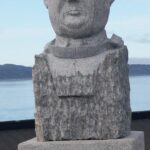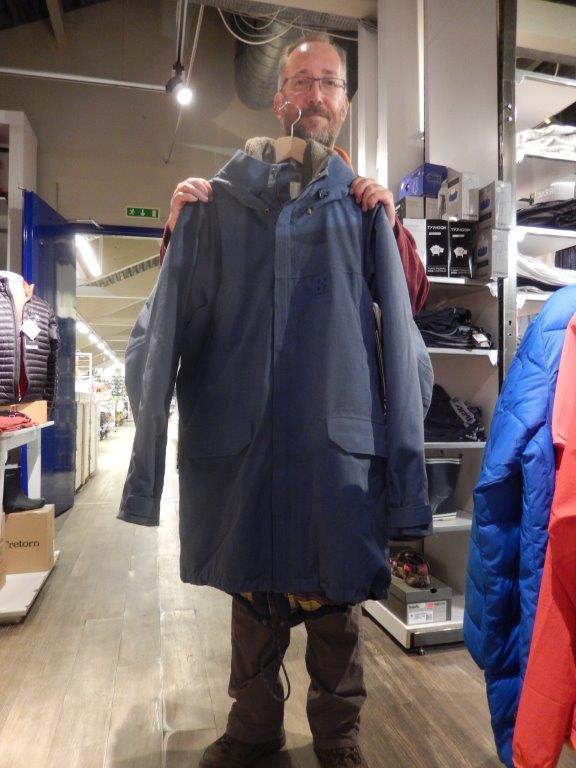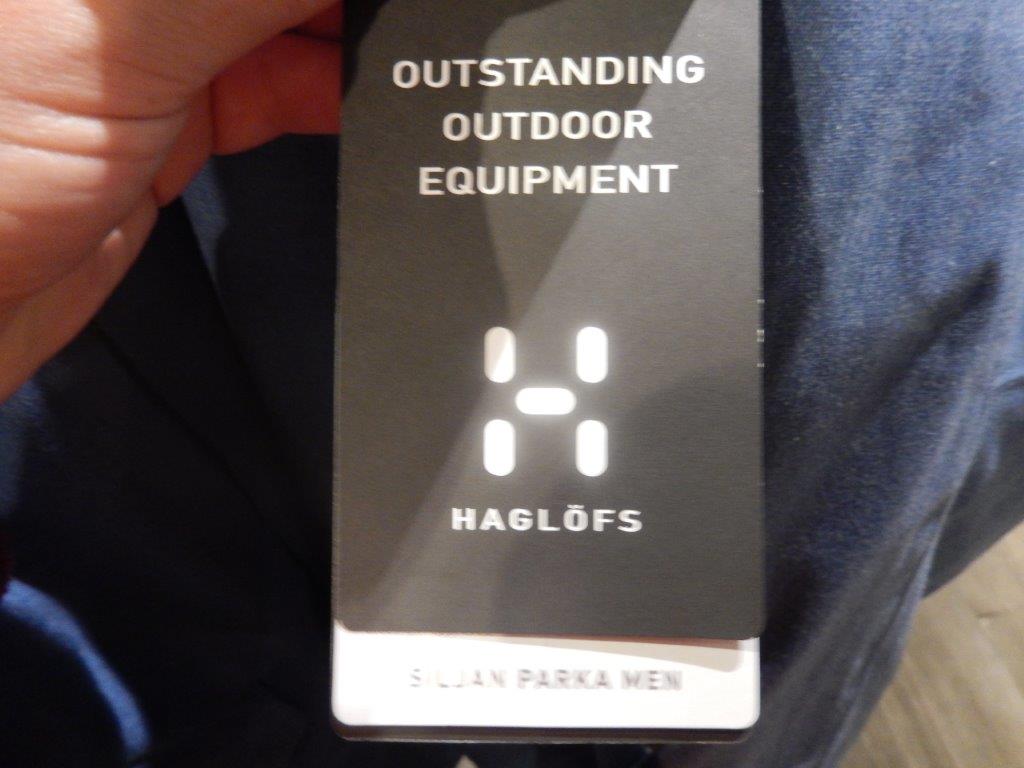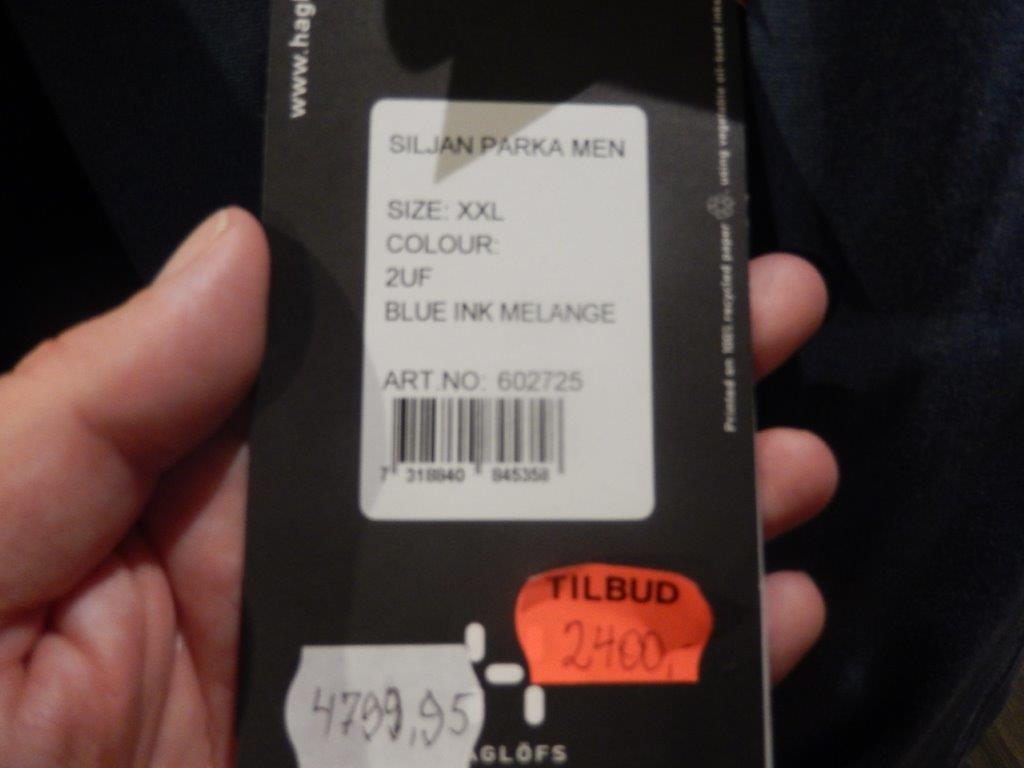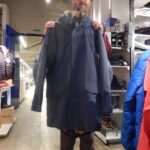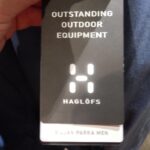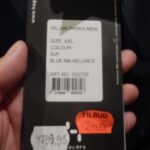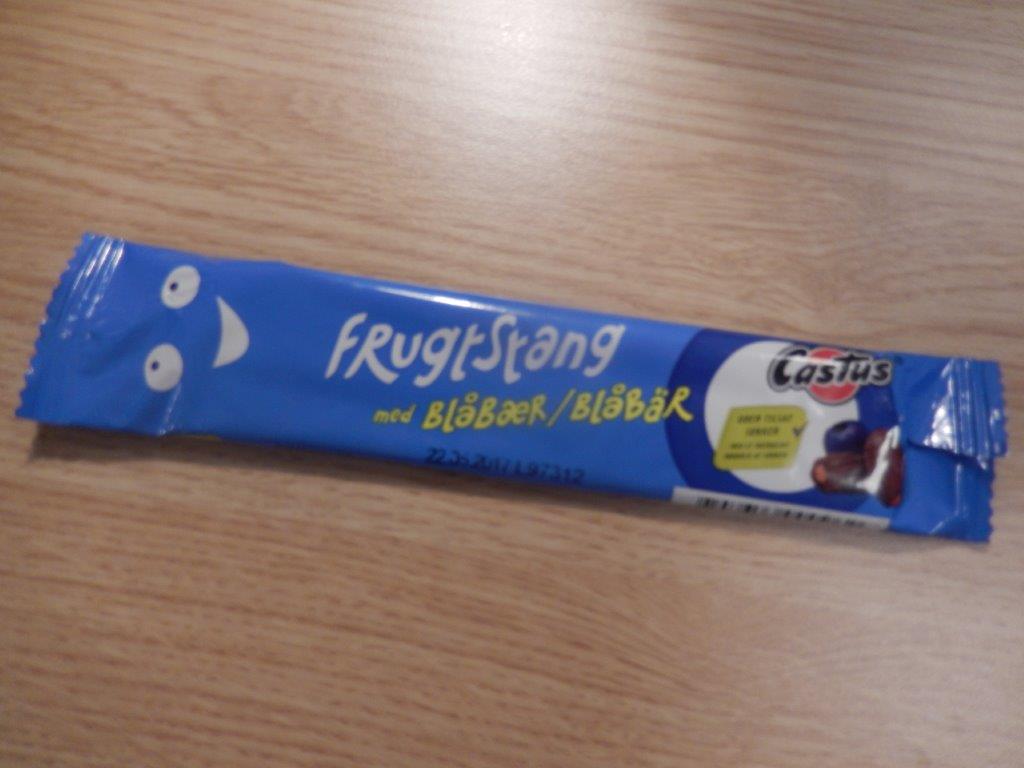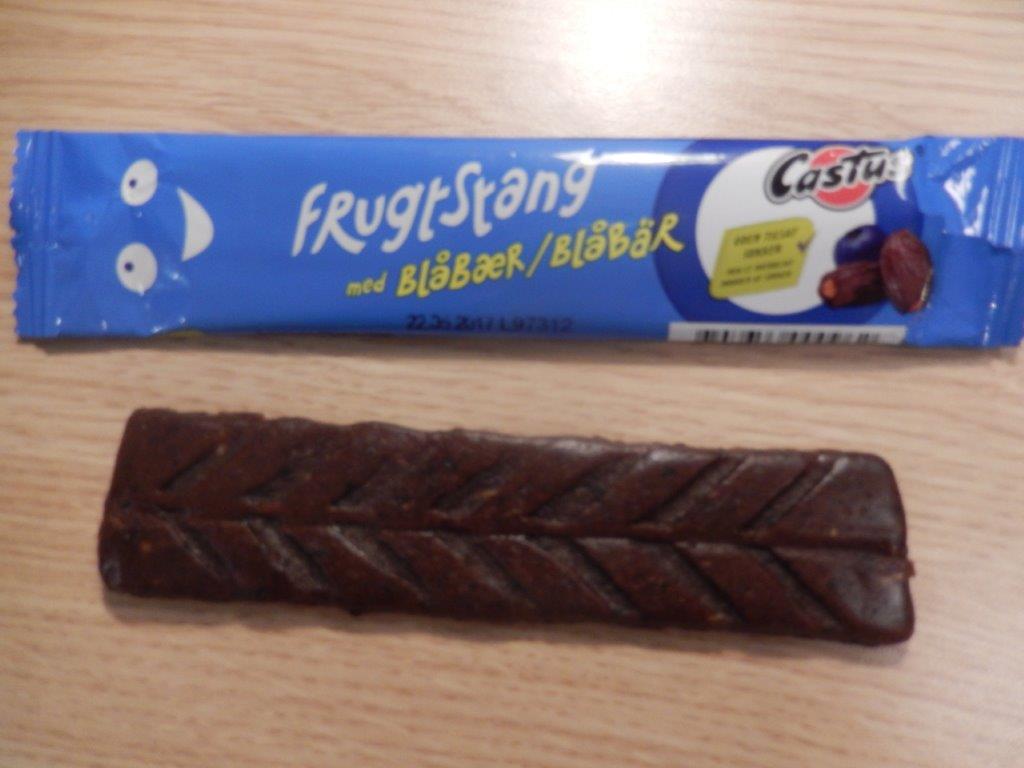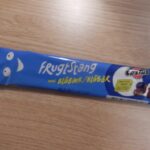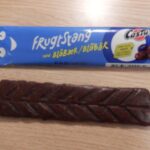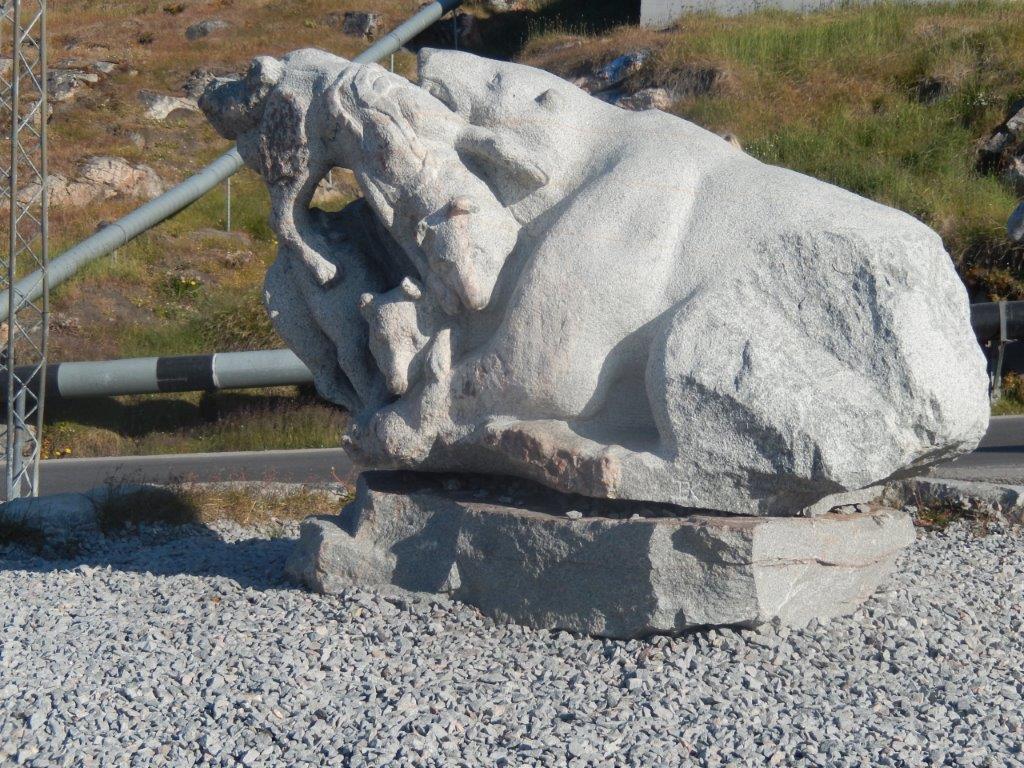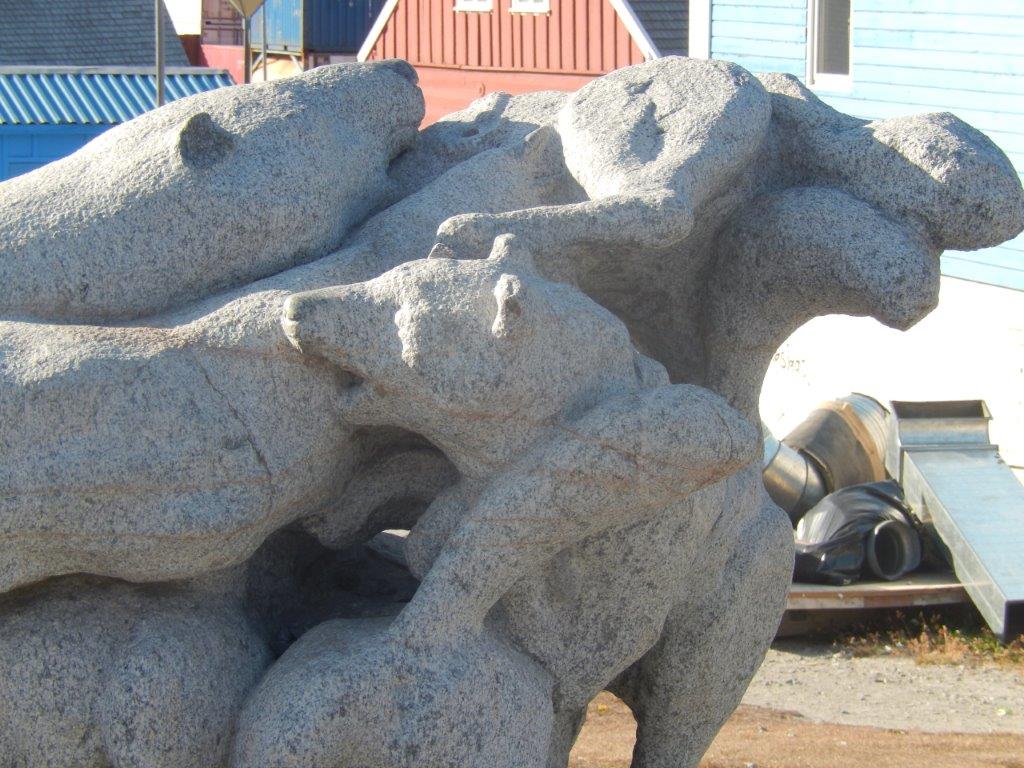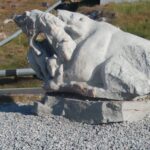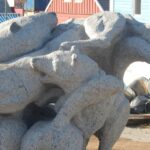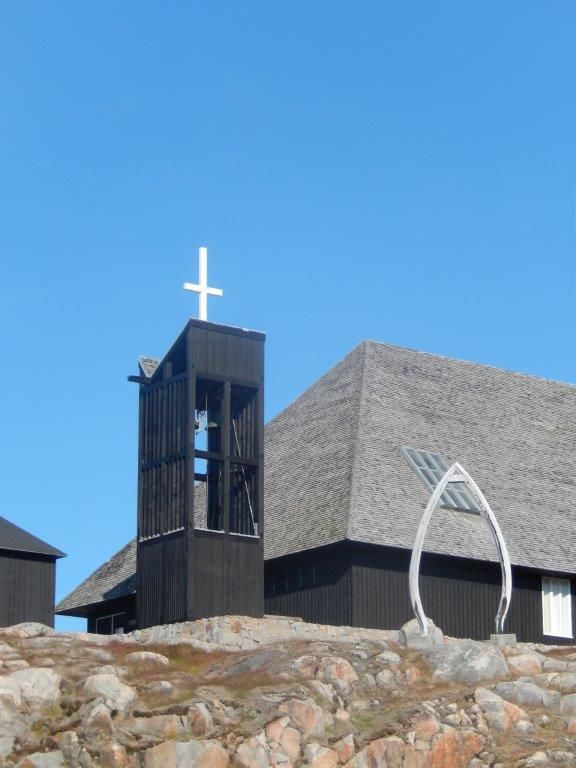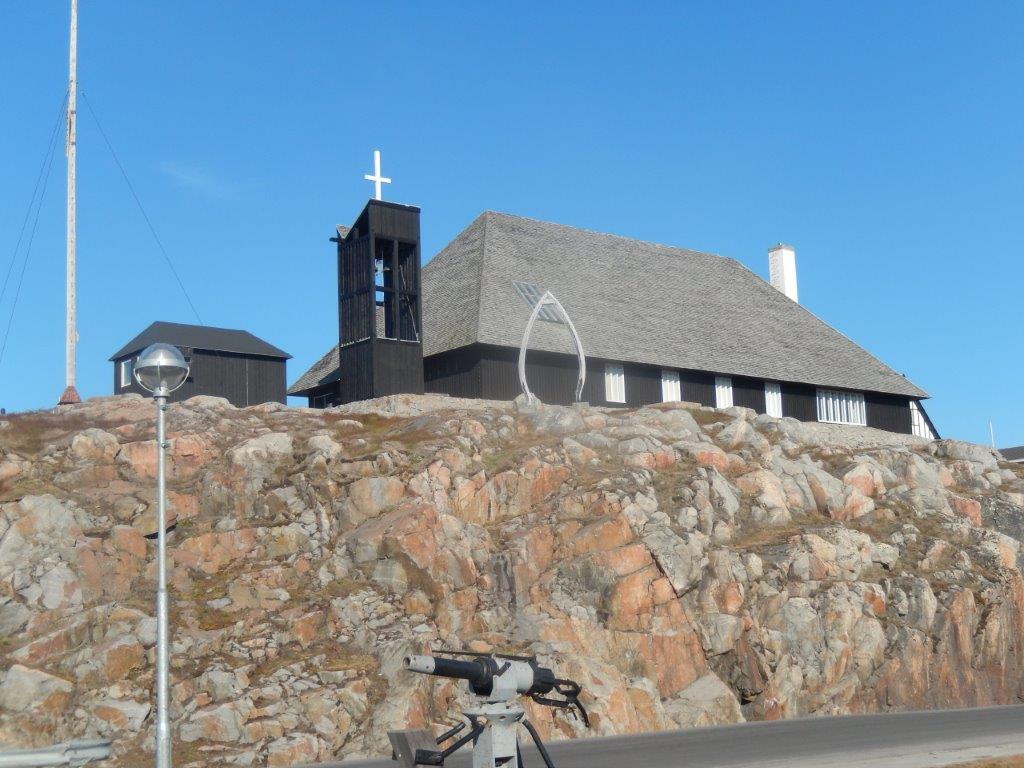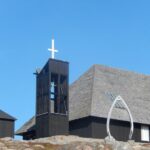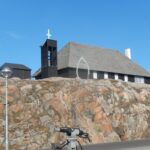41. Greenland: Stolen moments of time in Aasiaat
The Wandelgek gently walked through the afternoon sun thinking he could now also have been on a plane towards Denmark. He had just now checked the weather reports and it was cold 🥶 and very, very wet 🌧 in Copenhagen for the next few days. “It could’ve been worse” he thought while biding this few hours of “stolen” time in sunny Greenland 🌞😃
Yesterday he had been on this boat delayed by a heavy storm and afterwards on a whale hunt in the archipelago around Asiaat. He had seen lots of whales and even a whale graveyard before returning to Aasiaat.
Now he walked through the harbour near Sjömanshjemmet and saw this huge intact whale skeleton near the water…
Archaeological projects in the region have suggested human habitation in the region that includes Aasiaat as far back as the 5th millennium BC. The earliest modern settlers dated to around 1200; these were probably subsistence hunters. These inhabitants hunted harp seals and capelin (ammassaat) near Sydøst Bay in the spring. In the summer, they moved to Nassuttooq for reindeer and halibut. During autumn, the people of Disko Bay returned home to hunt small harp seals. In the winter, the bay froze over, and they hunted narwhals and Beluga whales. These early people designed and built their own kayaks and umiaks when the water freed up; in the winter, they used qamutits.
The head of this baby whale was huge compared to the rest of its skeleton.
The harbour area of Aasiaat
On May 3, 1940, a treaty signed in Godhavn allowed American relief airplanes bound for the British Isles to use Greenlandic, Icelandic, and Scottish airspace. A result of World War II was the fact that Denmark, under the control of Nazi Germany, could not freely send supplies to Greenland; this task fell to the United States and Canada. Supplies were stored near Aasiaat, and were then transferred to other towns of the region, such as Uummannaq and Sisimiut.
Shipwrecks in the harbour
The Wandelgek noticed there were quite some shipwrecks in the harbour too, just eroding away…
Sunlit Aasiaat
Aasiaat or Ausiait, formerly Egedesminde, is a town in the Qeqertalik municipality in western Greenland, located in the heart of Aasiaat Archipelago at the southern end of Disko Bay. With a population of 3,069 as of 2020, it is Greenland’s fourth-largest town.
Aasiaat saw much growth in the first half of the 20th century. In 1932, the town opened the first school in the country which allowed women to obtain secondary education. One of its first graduates was the first woman novelist of Greenland, Mâliâraq Vebæk, who was valedictorian of her graduating class in 1934
A Greenlandic sewer system
The island is, like all the other islands in the archipelago, quite rocky and there’s not a thick layer of soil on top of that but only a few patches here and there where grass can grow.
Because of this the sewer system can’t be dug into the ground but had to be built on top of that (not only the sewer system, but also water and electricity supply).
The drainage tubes therefore run above ground between the houses, which has all sorts of practical disadvantages. E.g.: To go from an area on one side of a drainage/sewer tube to an area on the other side an inhabitant needs to cross over such a tube. For this little wooden bridges with stairs on both sides are built…
Addiction to smoking
Greenland has some enormous problems to tackle. In previous blogpost I already mentioned the threat of the inclining and aging population of many Greenlandic villages due to isolation (specially during the long dark winter), joblesness, no availability of recreational activities for the young ones and having no perspective on a brighter future.
This leads a lot of people into escapism through excessive alcohol abuse but also in stress reducing but unhealthy nicotine addiction. This had been visible in some of the villages The Wandelgek past through (beer cans and sigarette stumps lying around), but it seemed a bit more visible in Aasiaat.
I of course only visited part of the west coast, but things arecworsevon the east coast and in the north which have even more isolated villages and attracts less tourists.
Maybe this ash tray bin is symbolic for that…
(Eco) Tourism is one of the things that might be able to stop the incline of population and the migration of the young people in those small villages.
The library
Aasiaat was tiny, but still it was the fourth largest “town” in Greenland so it did have some facilities, like e.g. a small museum, shops and a library 😍
This statue stood in front of the library. I thought it was quite a funny head.
Shopping Center
There was to my surprise quite a large shopping mall on the main street of Aasiaat.
I visited the outdoor section and fell in love with this beautiful Haglöfs coat… until I checked the price.
In the groceries section I bought some blue berry fruit pulp bars which are some of my favorite trekking snacks. Found them in The Netherlands as well and they even come on other fruit tastes as well, but blueberry is still my favorite🫐🫐🫐😋
In the shop were several television sets and I watched the finals of the football match (I detest people calling that soccer, it is FOOTBALL) of the competition which I started following after I saw a live match on Qeqertarssuaq😍.
A nordic statue
This beautiful statue depicting an polar bear family caught my attention…
The church
The church of Aasiaat was at a high vantage point overlooking the harbour area. In front of it was this whale jaw gate, which I had seen in Ilulissat and Qequertarssuaq too.
It is said that when you walk through this gate in one direction, you’ll get lucky, but if you walk in the other direction you get unlucky. But… normally there is no agreement over which direction provides what.
However… I’m almost sure that in this location there is certainty about which direction is the luckier one 🤣😂🤣😂
When it got evening, The Wandelgek returned to his new place to stay at the barracks.
They were located at the verge of the water and a bit further was a smaller uninhabited island.
I met with the also stranded Danish travellers that had invited me for dinner and we had a cool evening together having some beers as well and some serious and other fun conversations about politics and Danish rule over Greenland. We talked intensely about Danish people working temporarily in Greenland and about young Greenland folk studying in Copenhagen, never to return to Greenland again.
Meanwhile it was not getting dark so we all kept our eyes on the water to see whether we could spot some more whales, but for some reason they seemed to have moved on and we spotted not even 1 that evening.
Then The Wandelgek returned to his basic room and had a good night’s rest, convinced that now that the mist had gone and sky was bright, he could safely travel further and leave the country.
